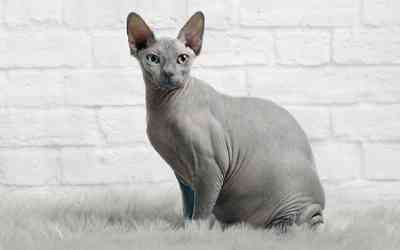Beauty is indeed a subjective concept, and while we see it in everything from the sun to trees and birds, some animals are deemed less aesthetically pleasing than others. For instance, lizards are often considered unappealing and Ugliest Animals.
Table of Contents
Similarly, other animals are also widely considered ugly due to their lack of cuteness, unlike koalas and quokkas which are adored by many. It’s interesting to ponder what drives our perceptions of beauty and why some creatures, such as lizards, are met with disdain while others, such as tigers and lions, are admired for their beauty and strength.
Overview of Top 10 Ugliest Animals on Earth
#1 Purple Frog
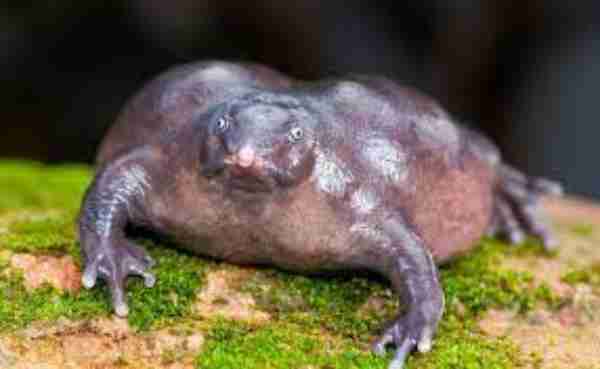
- Scientific Name: Nasikabatrachus sahyadrensis
- Locations and Main Habitat: Forest and lakes in western India
- Average Size and Weight: 7 centimetres and 165 grams
- Average Lifespan: 1 year
- Natural Predators: deforestation and Consumption of Locals
Can you guess who stands out among amphibians? That’s right—it’s the purple frog. While most frogs are typically green or brown, this peculiar creature flaunts a distinctive purple hue, setting it apart from its counterparts. With its rare coloration and small head, it undoubtedly appears peculiar among its amphibian companions.
The purple frog possesses a uniquely pointed snout and small eyes. Adding to its distinctiveness, its tiny eyes boast horizontal pupils, while its body resembles a balloon inflated with gas.
Perhaps aware of its unconventional looks, the purple frog spends the majority of its life concealed in underground burrows. It clings to rocks and boulders submerged in water. In terms of diet, the purple frog sustains itself by consuming termites, worms, and ants.
You may wonder why encounters with purple frogs are not commonplace. This is because they emerge from their hiding spots exclusively during the mating season, which spans approximately two weeks.
The purple frog is primarily found in India. Its elongated snout has earned it alternative monikers such as the pig-nosed frog or nose frog.
#2 Naked Mole Rat

Scientific Name: Heterocephalus glaber
Locations and Main Habitat: semi-desert, East Africa
Average Size and Weight: 13 centimetres and 35 grams
Average Lifespan: 30 year
Natural Predators: Birds of prey; Snake
For various reasons, many people have an aversion to ordinary rats. These creatures are regarded as unclean, finicky, and unattractive. Furthermore, they tend to be unfriendly in general. However, if you think common rats are unbearable, prepare yourself for the naked mole rat. They surpass their domestic counterparts in terms of repulsiveness. Fortunately, naked mole rats are not typically encountered in residential areas or populated regions, as they prefer wooded areas and deserted places.
Hairless animals are often deemed unattractive, and naked mole rats are no exception. These creatures are considered visually displeasing, lacking protective hair that would shield them from both heat and cold.
The naked mole rat is remarkable not only for its appearance but also for its unique physiological traits. It is unable to experience pain and possesses a remarkable resistance to cancer.
Sporting yellowish skin, occasionally with a pinkish tinge, the naked mole rat’s appearance is truly unsettling. Its skin is wrinkled, further accentuating its eerie nature. Every aspect of its physical features is likely to evoke a sense of discomfort, from its slender legs to its minuscule eyes and the pronounced protrusion of its front teeth, surpassing that of any other rat species.
It is possible that the naked mole rat is aware of its unappealing appearance, as it spends its days dwelling in underground burrows within organized groups led by a queen. These groups of naked mole rats exhibit a strong support system and collaborate tirelessly to ensure the welfare of the collective.
#3 Monkfish

Scientific Name: Lophius
Locations and Main Habitat: Northwest Atlantic Ocean
Average Size and Weight: 4,5 feet and 50 pounds
Average Lifespan: 13 year
Natural Predators: bigger fish, sharks
Among the unattractive creatures dwelling in water, we encounter the infamous “sea devil” itself, commonly known as the monkfish. This aquatic creature bears a striking resemblance to the naked mole rat in terms of its lack of appeal.
While the monkfish is acknowledged for its delectable meat, its physical appearance does not evoke pleasant sentiments. Its tail, in particular, is solely consumed as a meal due to its repulsive nature.
Referred to by various names such as the sea devil or the frogfish, the monkfish derives its monikers from its frog-like features and remarkably unappealing visage. When it comes to its appearance, the monkfish possesses a flat, sizable head with disproportionately small eyes. Its wide-open mouth and inward-pointing sharp teeth contribute to its unsightly countenance. Notably, the body of the sea devil tends to be smaller in comparison to its head.
Sporting a prominent, slender horn on its head known as the esca, along with numerous spines scattered across its head, the monkfish possesses camouflage capabilities in the sea. The spines resemble algae or seaweed, aiding in their ability to blend into their surroundings.
The slimy texture of the monkfish’s body further accentuates its exceptionally repugnant appearance. However, these characteristics contribute to its survival skills, allowing it to hide effortlessly beneath the water’s surface.
#4 Proboscis Monkey
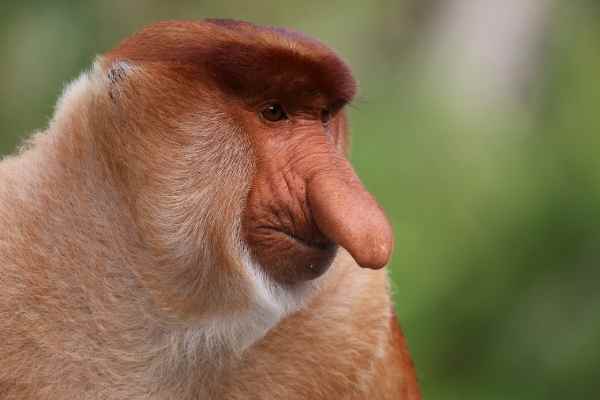
Scientific Name: Nasalis larvatus
Locations and Main Habitat: Borneo Jungle
Average Size and Weight: 70 cm and 22 kg
Average Lifespan: 20 years
Natural Predators: Crocodile, Leopard
Now, shifting our focus to a lesser-known creature on land, let’s delve into the peculiar world of the probosci’s monkeys. While we generally find monkeys to be fascinating and delightful creatures, this particular species differs from the norm and lacks visual appeal.
The proboscis monkey, also referred to as the old-world monkey, goes by various names such as the long-nosed monkey, orang belanda, monyet belanda (Dutch monkey or Dutchman), and its scientific name, Nasalis larvatus. These monkeys primarily inhabit riverine forests, mangroves, and swamps in Indonesia and the Southeast Asian island of Borneo. They typically reside in lowland habitats near bodies of water.
The term “proboscis” pertains to long noses in animals, and these monkeys have earned their name due to their elongated nasal appendages. Male probosci’s monkeys boast even longer noses than their female counterparts, with their noses extending beyond their mouths.
Interestingly, they obtained their name from the Dutch colonizers of Indonesia, who were known for their prominent bellies and large noses. Proboscis monkeys also possess long tails, measuring approximately 21 to 30 inches in length.
The diet of probosci monkeys primarily comprises flowers, fruits, seeds, leaves, bark, and insects. Unfortunately, due to habitat loss and other factors, they have been declared an endangered species. With a lifespan of up to 25 years, they undeniably secure their place on the list of the top 10 ugliest animals in the world.
#5 Sphynx Cat

Scientific Name: Felis catus
Locations and Main Habitat: Canada origin
Average Size and Weight: 50 cm and 6 to 12 pounds
Average Lifespan: 8 – 14 years
Natural Predators: Cars, Other Cats
It’s no secret that almost everyone loves a cute kitty. Whether it’s their fluffy tails or playful antics, cats always have a special place in our hearts. However, there is one type of cat that doesn’t quite fit the mold of what we consider adorable. Enter the sphynx cat.
Though it has all the usual features of a feline, from a cute nose to small paws, this hairless breed simply doesn’t evoke the same “aww” factor as its furry counterparts. With its unique appearance, the sphynx cat is often compared to the naked mole rat.
While some may find its lack of fur strange, there’s no denying that the sphynx is an interesting and unforgettable breed.
#6 Hyena
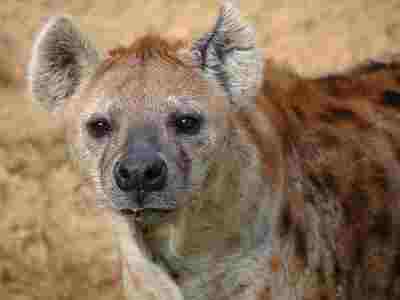
Scientific Name: Hyaenidae
Locations and Main Habitat: Africa Savanna
Average Size and Weight: 37 to 59 inches and 90 to 170 pounds
Average Lifespan: 25 years
Natural Predators: Lion, Leopard
Renowned as swift predators that feast upon their prey, hyenas are often referred to as the “jokers” of the African savannah. Regrettably, they do not possess an aesthetically pleasing appearance, and their carnivorous nature is accompanied by a reputation for brutality towards their victims.
Hyenas exhibit distinct features that contribute to their eerie appearances, such as their peculiar barks and unique eyes. Their patchy skin and formidable presence further enhance their intimidating aura. Interestingly, even the king of the Jungle, the lion, prefers not to engage in hunting hyenas.
One reason why lions refrain from pursuing hyenas is that they are not a preferred dietary choice, given that hyena themselves are skilled hunters. Additionally, hyenas are formidable predators, making it a challenging task for lions to hunt them.
Unlike many other predators in the animal kingdom, hyenas are not averse to consuming the remains of other predators, making them scavengers as well. Hence, they not only hunt their own prey but can also thrive on the leftovers of other predators. Various species of hyenas exist, all renowned for their cunning hunting techniques.
Despite their unattractive appearance, hyenas are considered intelligent creatures, and hyena mothers are known for their nurturing and protective instincts towards their cubs. Female hyenas often assume leadership roles within hyena clans, showcasing their prominence within their social structure.
#7 Blobfish
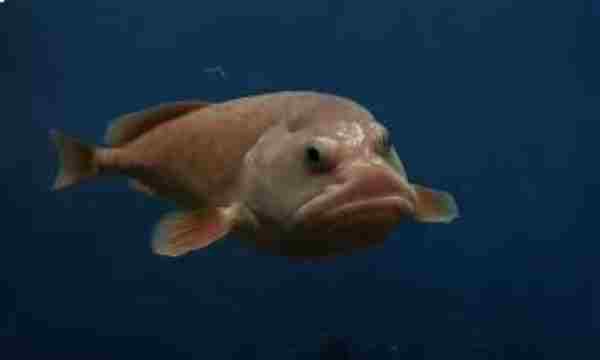
Scientific Name: Psychrolutes marcidus
Locations and Main Habitat: Southwest Pacific, Deepsea
Average Size and Weight: 30cms (12 inches), 20 pounds (9 kg)
Average Lifespan: 130 years
Natural Predators: None
Prepare yourself for another intriguing sea creature, the Blobfish. This peculiar marine species lacks a muscular structure and resembles nothing more than a slimy, gelatinous mass. Its name perfectly encapsulates its appearance, as it truly resembles a formless blob.
The Blobfish’s slimy exterior is undeniably bizarre, making it challenging to behold without experiencing a sense of revulsion. Picture a sphere of gelatin with two eyes and a prominent nose, and you’ll have an accurate mental image of a Blobfish.
When it comes to food, the Blobfish is not particularly selective. It simply opens its mouth and swallows whatever liquid substance lies before it, requiring minimal effort to have its meal. Growing up to approximately 12 inches in length, the Blobfish epitomizes the epitome of laziness among fish in the sea.
Notably, Blobfish are not suitable for consumption. They inhabit the deep recesses of saltwater bodies such as oceans and seas. Swimming in the profound depths presents considerable challenges, but the Blobfish navigates these depths with ease, much like we effortlessly float in water using a lifebuoy.
The immense pressure experienced in the ocean’s depths necessitates adaptations and the Blobfish’s low-density aids in its ability to float without expending excessive energy. Its peculiar appearance serves a practical purpose, allowing it to thrive even in the profound depths of the ocean.
#8 Aye-Aye
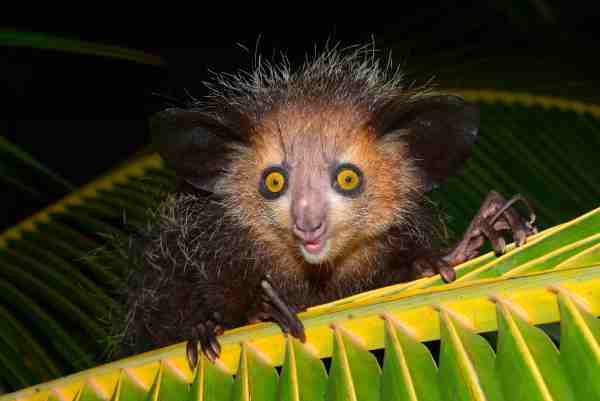
Scientific Name: Daubentonia madagascariensis
Locations and Main Habitat: Madagascar East Cost
Average Size and Weight: 2.5 – 3.3 ft (0.7 – 1 m), 4lbs – 6lbs (2kg – 2.7kg)
Average Lifespan: 21 -23 years
Natural Predators: Birds of prey, Snakes
Introducing another member of the top 10 ugliest animals worldwide, we have the enigmatic aye-aye. The origin of their intriguing name remains a mystery, with different theories proposing various explanations.
Some speculate that it may be named after a French naturalist who expressed astonishment upon encountering them, while others believe it could stem from a local phrase meaning “don’t know.” Regardless of its etymology, the aye-aye has undeniably secured its place on our list.
Although some individuals may find them cute and endearing, we respectfully disagree. Aye-ayes are squirrel-like primates native to Madagascar and belong to the same family as apes and monkeys. Notably, they hold the distinction of being the largest nocturnal primates in existence. Unlike most primates that are active during the day, aye-ayes prefer the cover of darkness.
These peculiar creatures primarily inhabit the rainforests of Madagascar, although their origins can be traced back to Egypt and Kenya. Their distinct facial feature lies in their eyes, which contribute to their somewhat eerie appearance.
Aye-ayes are not particularly sociable animals and tend to lead solitary and arboreal lives. In addition to their unique eyes, another distinguishing characteristic of aye-ayes is their long, bony fingers, particularly their extraordinarily elongated third finger.
When fully grown, they measure approximately one foot in length, accompanied by a bushy tail that spans around two feet. There are no notable visual distinctions between males and females, except for a slight difference in weight, with males typically being slightly heavier than their female counterparts.
#9 Giant Salamanders

Scientific Name: Cryptobranchidae
Locations and Main Habitat: Lakes, Asia
Average Size and Weight: 60-70 cm, 5-6 kg
Average Lifespan: 30 years
Natural Predators: Hog badgers, Red foxes, Weasels
Let’s delve back into the realm of amphibians. In our opinion, all amphibians possess certain unappealing qualities, including frogs, toads, and salamanders. It is their slimy bodies that make them less pleasing to the eye. Now, let’s discuss giant salamanders, impressive creatures that can reach lengths of up to 6 feet (approximately 1.8 meters). These fascinating amphibians can be found both in rivers and on land.
One striking feature of giant salamanders is their lack of eyelids, which adds to their unique appearance. With their broad bodies and large heads, they also possess loose skin on the sides of their faces. Being amphibians, salamanders rely on their skin for respiration, which is why their skin is covered in a layer of mucus. This slimy substance serves the dual purpose of warding off parasites when they are on land and aiding in underwater breathing.
Among all amphibians, Chinese giant salamanders boast the longest lifespan. When sensing danger, the Japanese giant salamander produces a secretion that emits an odour reminiscent of Japanese pepper. Salamanders, in general, produce this secretion as a defense mechanism to deter predators, and it proves effective against most creatures except for humans.
Salamanders are primarily carnivorous, feeding on a variety of creatures such as crayfish, snails, small mammals, insects, and fish. Due to their slower metabolism, they can endure prolonged periods without food, even for several weeks. Additionally, salamanders tend to have poor eyesight, relying instead on vibrations in the water to detect and capture their prey.
One extraordinary ability of salamanders lies in their remarkable regenerative capabilities. They possess the remarkable capacity to regenerate both skin and bone, showcasing their incredible resilience and adaptability.
#10 Pufferfish

Scientific Name: Tetraodontidae
Locations and Main Habitat: Tropical and Subtropical Oceans
Average Size and Weight: 2 feet, 30 pounds
Average Lifespan: 10 years
Natural Predators: Sharks, Bigger Fish
Pufferfish, also known as blowfish, swellfish, toadfish, puffers, globefish, or balloonfish, exhibit a distinctive appearance. Unlike most fish, they lack scales on their skin and instead possess spines all over their bodies. Similar to the Blobfish, they are often regarded as sluggish swimmers, but unlike their blob-like counterparts, pufferfish are capable of rapid bursts of speed when necessary. Interestingly, pufferfish can even swim backward and change directions with ease.
Belonging to the family Tetraodontidae, pufferfish encompasses around 120 species distributed among 19 different genera. These fascinating creatures primarily inhabit tropical waters across the globe, both in saltwater and freshwater environments. They can be found in regions such as the Red Sea, and the Pacific Ocean, as well as the Amazon and Mekong Rivers, along with estuaries of freshwater bodies. While pufferfish are generally small, the largest specimens can grow up to approximately 90 centimeters (around 3 feet) in length.
One remarkable ability of pufferfish is their capacity to inflate themselves with air or water, transforming their bodies into nearly spherical shapes. For instance, when disturbed or feeling threatened, the blowfish inflates itself as a defensive mechanism. It is important to note that pufferfish should not be confused with porcupinefish, which belongs to a different family.
While pufferfish exhibit intriguing characteristics, they also possess a dangerous side. All pufferfish produce a substance called tetrodotoxin, which makes them unpalatable and often lethal to other fish that attempt to consume them. Furthermore, this toxin poses a significant threat to humans, being approximately 1,200 times more poisonous than cyanide. A single pufferfish has the potential to kill up to 30 adult humans, and currently, there is no known antidote for its venom.
However, the Japanese have developed a method to prepare pufferfish as food. Skilled and licensed chefs meticulously clean and cook these fish, ensuring the removal of toxic parts. This culinary practice, known as fugu, is considered a delicacy in Japan. Despite the precautions taken, annual deaths still occur due to the inherent risks associated with consuming pufferfish.
Final Words On Ugliest Animals
It’s a subjective concept, and what one person finds beautiful, another might find repulsive. Even so, there are some animals that seem to be commonly agreed upon as being somewhat unsightly. From hairless cats to blobfish, the world is full of creatures that may not be considered easy on the eyes. Of course, beauty is in the eye of the beholder, so what might be the ugliest animal to one person could be stunningly beautiful to another.
Reference:
- https://www.activewild.com/ugly-animals/#:~:text=Ugly%20animals%20include%20mammals%20such,amphibians%20such%20as%20giant%20salamanders.
- https://nambiti.com/2022/06/13/what-are-the-ugly-five-and-why-do-they-get-called-that/
- https://www.goodgoodgood.co/articles/ugly-animals#:~:text=In%202013%2C%20the%20blobfish%20was,is%20from%20deep%2Dsea%20trawlers.

Jeevan Kodiyan
An animal enthusiast with an interest in zoology, studying the behavior and activities of animals in the wild habitat. I work on research projects related to species conservation and endangered species protection. I also leverage zoology to become an educator, educating others about the importance of protecting our natural environment and the beauty of animals in their natural habitats.

